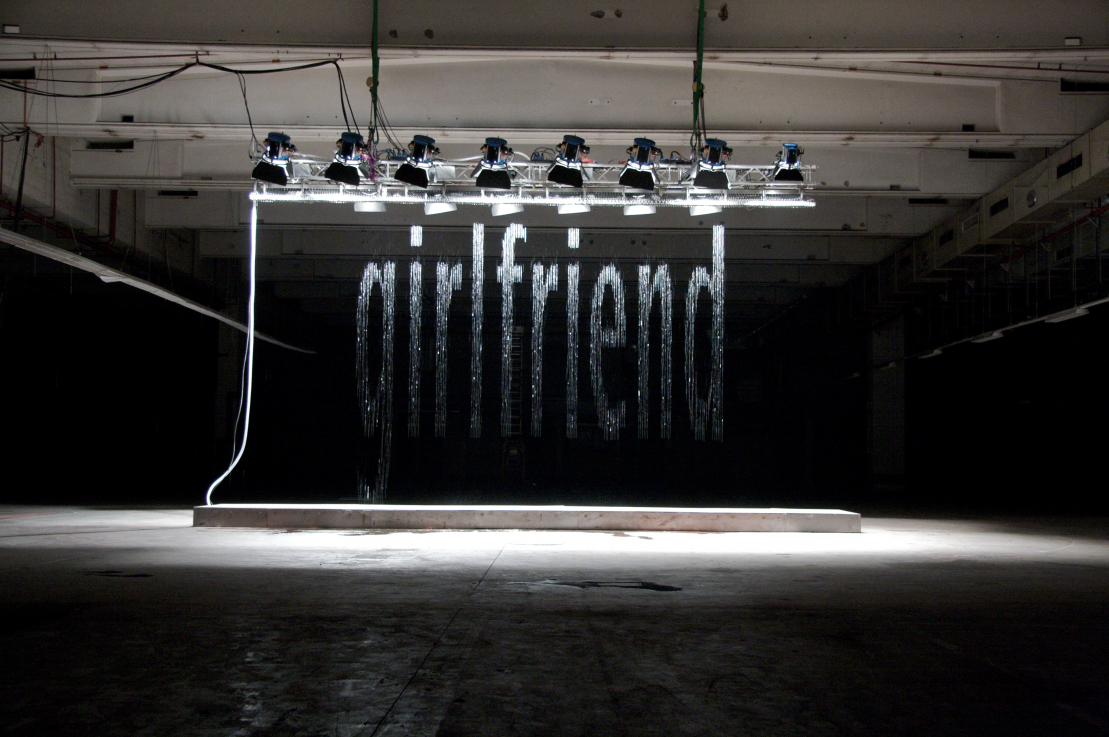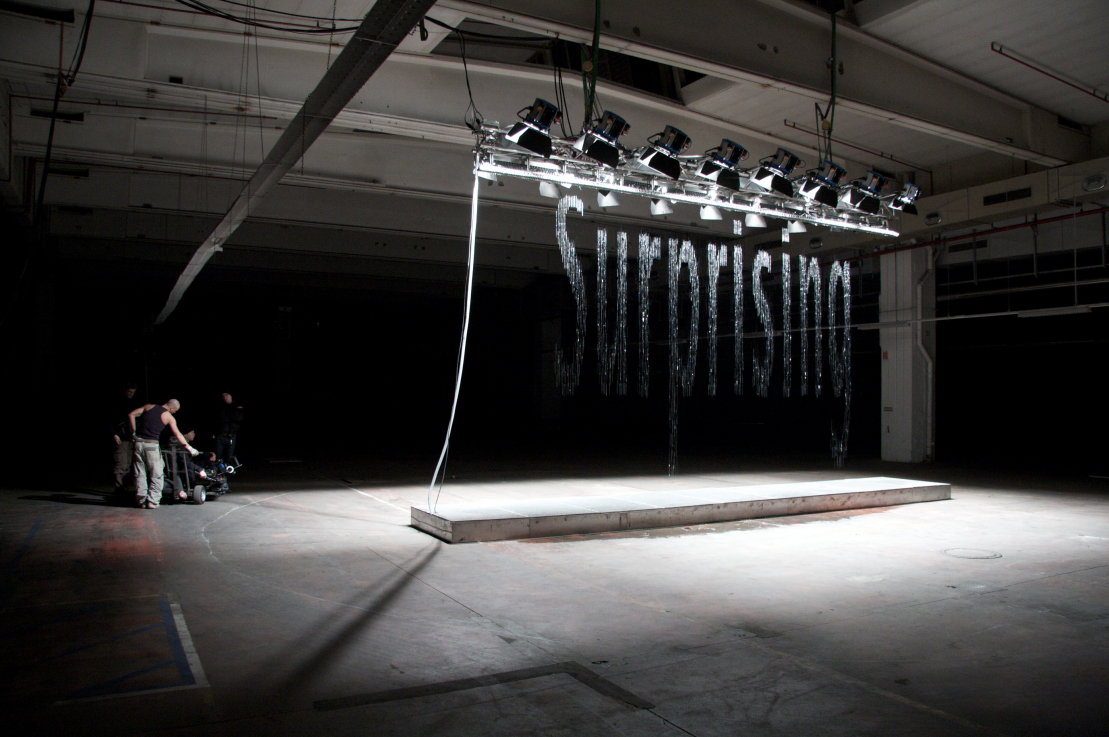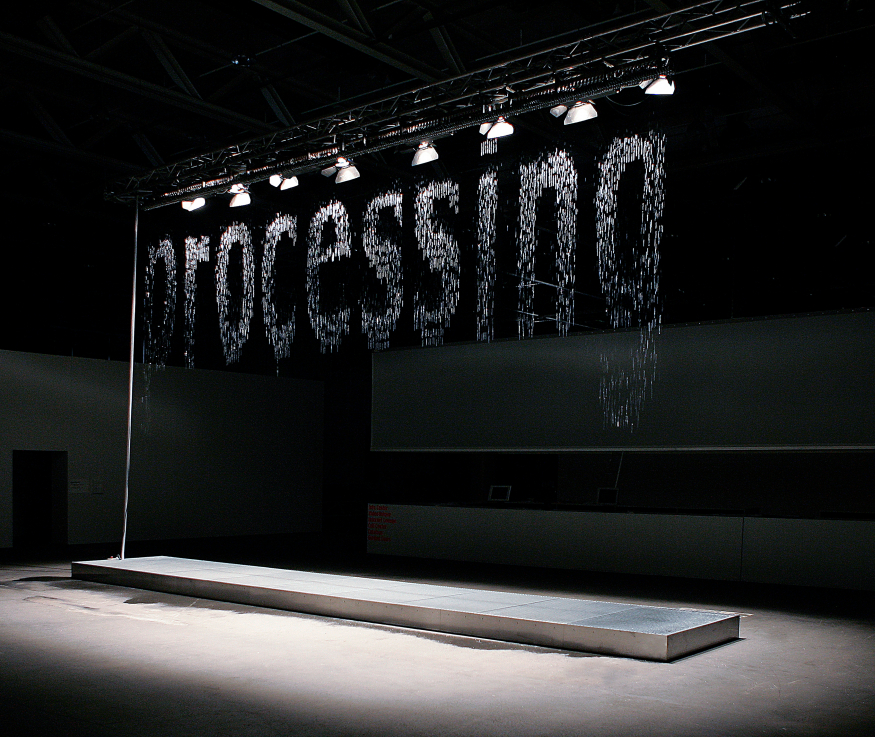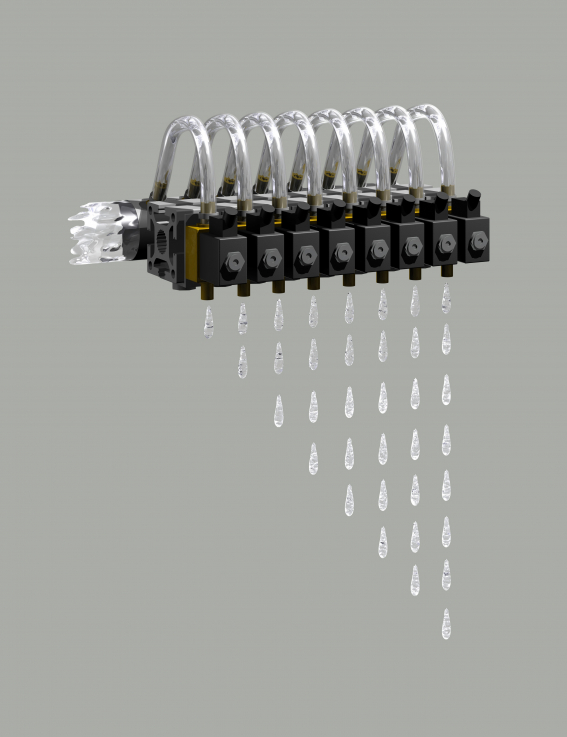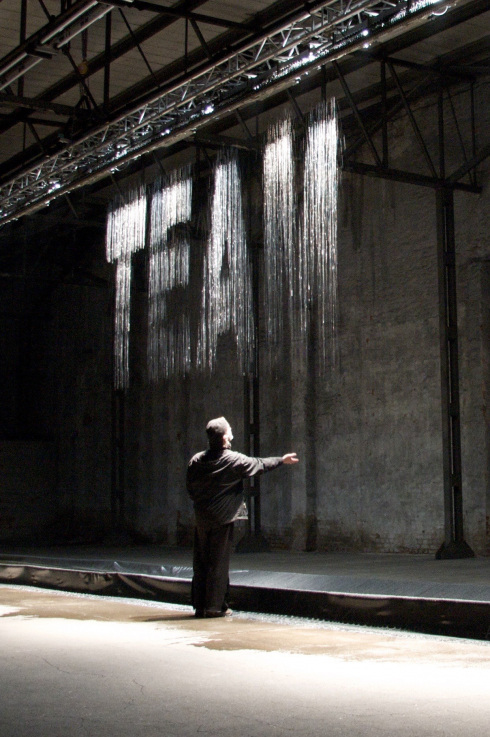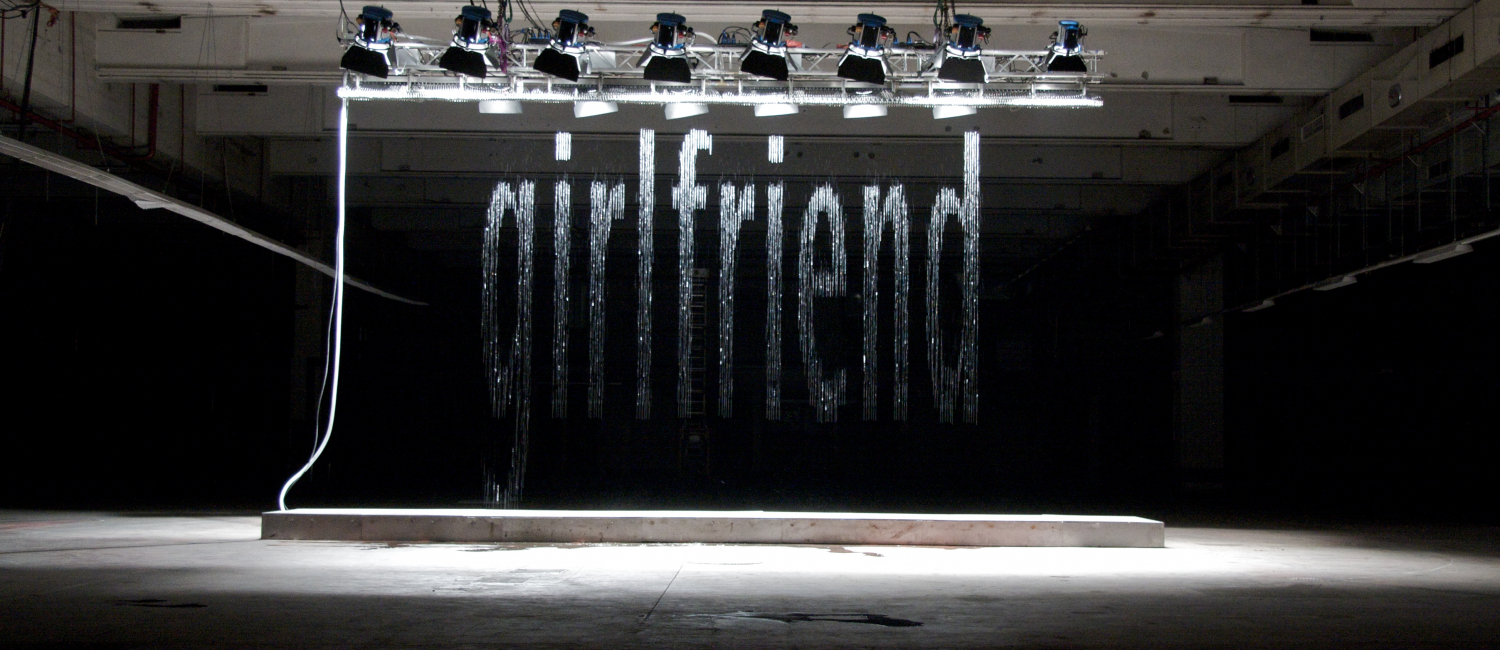16 June – 31 July 2016
Julius Popp: Bit.Fall (2016)
water, pump, magnetic vents, electronics
[800 cm width x 35 cm x 35 cm / variable height]
The present work of Julius Popp’s Bit.Fall shows the logical next step of the project which started in 2001 with 8 nozzels. From the beginning water is used as a medium between information drawn from current affairs and the viewer. The input of the installation is formed by current buzzwords selected from various internet news websites by a statistics-based computer program. The digital information is analogised, producing images shaped by the water: nozzles emit individual drops of water through magnetic valves. A computer program is employed to synchronise the magnetic valves, making it possible to freely determine the shape of the bitmap pattern formed by the drops as they fall to the ground. As they dissolve, the water structures are collected in a container. The water is continuously sucked back into the valve construction by a pump, creating a closed circuit.
Julius Popp develops interdisciplinary works in which art and science converge – ‘test set-ups’ that are as simple in structure and perceivable to the senses as they are complex and techno- logically sophisticated. They analyse interactions within complex systems by applying the autonomous, logical rules of constructed machines. The work focuses on the basic aspects underpinning the intricate interrelationships between humans, between humans and machines and humans and nature as well as their social implications – the process of becoming human through cultural and natural conditioning.
The ephemeral information-curtain is a metaphor for the incessant flood of information we are exposed to and from which we draw our perpetually changing realities. The visual information is only temporarily perceptible as an image before it dissolves into itself. The distribution of information is revealed as a transient, easily manipulated phenomenon. What remains are associations of the viewer. The point is not what we see. The decisive factor is how we evaluate it.
Julius Popp is a media artist. He was born in 1973 in Nuremberg, Germany. He currently lives and works in Leipzig, Germany. After an apprenticeship as a photographer, between 1998 and 2005 he studied Fine Arts at the Hochschule für Grafik und Buchkunst in Leipzig. From 2005 to 2009 he was a master class student of Astrid Klein at the Hochschule für Grafik und Buchkunst. In the past Popp has received several awards, including the Robot Choice Award of the international art exhibition ArtBots in 2003, the Ars Electronica Award of Distinction in 2008, the Kunstpreis of the Leipziger Volkszeitung in 2009, the Silver Design Lion and the Bronze Outdoor Lion of Cannes in 2011. His work often involves technology, resulting in interdisciplinary ventures that reach across the boundaries of art and science. He cooperates with the University of Leipzig, the Fraunhofer Society in St. Augustin, Germany, and the M.I.T. Cambridge in Massachusetts, USA. Since 2005 he was involved in various group exhibitions worldwide, and has realized solo exhibitions in the Kunsthalle Nürnberg, in the Oboro Art Centre, Montréal in Canada, in the Kunsthalle Wien in Austria, in the Galerie für zeitgenössische Kunst in Leipzig, in the Konstmuseum Eskilstuna in Sweden, in the National Museum of Modern and Contemporary Art, Seoul in South Korea, and in several other institutions.
Curator: Christian Gracza
Opening: 16 June 2016, 6 p.m.
The artwork is installed on the square in front of the Ludwig Museum, and can be visited until 31 July 2016.
Sponsors:
Dunapest Festival, CAPP (Collaborative Arts Partnership Programme), Goethe Institut Budapest
